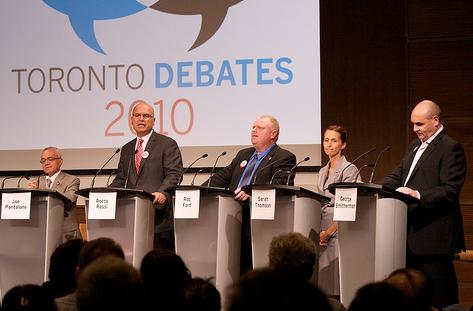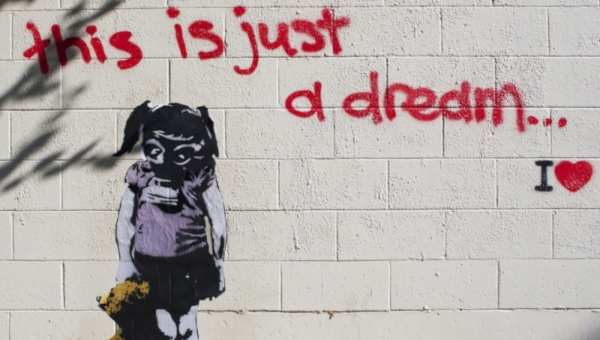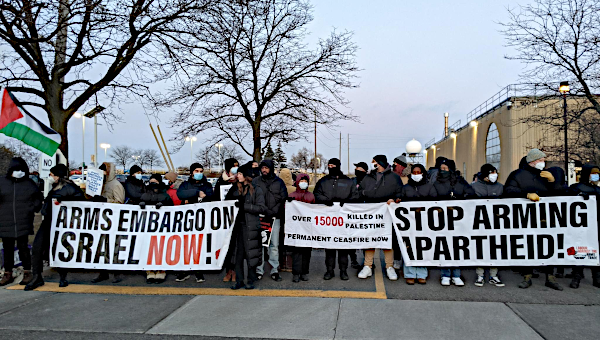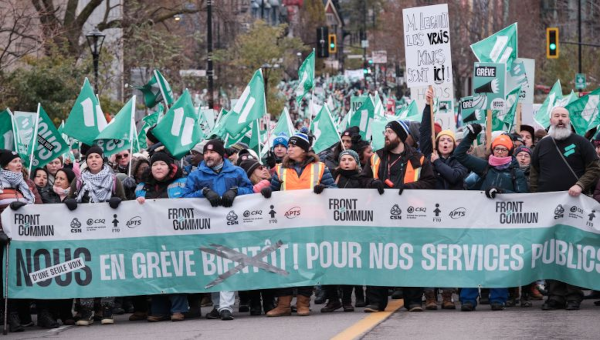The Hordes at the Gate? Hard-Right Populism Defines Toronto Mayoral Election
For months, Toronto has been enthralled by mayoral candidate, smallish capitalist, and friend of Finance Minister Jim Flaherty, Rob Ford. Much to the surprise of commentators in the ‘respectable’ bourgeois press of the Globe and Mail and the Toronto Star, the city councillor from Northern Etobicoke has been leading the mayoral race from his position at the hard right fringe of Toronto politics. As Ford pulled ahead of his principal rivals in the polls during the summer, media pundits and the voices of urban progressivism reacted with an anxious combination of disbelief and outrage. How was it possible that ‘sophisticated’ Toronto could consider electing such a boorish and violent man? In this town of Liberals, Red Tories and yuppie New Democrats, who could possibly take Ford seriously? Indeed, Ford was most well-known for making a fool of himself at City Hall with temper tantrums, blatant ignorance of policy, and an astounding inability to collaborate even with the small number of ideological fellow-travelers on City Council. More than anyone, he symbolized the isolation and ineffectiveness of the hard right in Toronto.
Two Views

As the Toronto municipal election campaign entered its last phase in September, fatalism started to displace fearful disbelief among some of Toronto’s liberal and progressive political pundits. While some elements in Toronto’s ruling circles started to deliberate about ways of closing ranks to keep Ford out, others started to suggest that perhaps Ford is not so bad after all. These ‘sober’ analysts pointed out that at least three of his principal rivals George Smitherman (former Liberal cabinet minister at Dalton McGuinty’s Queen’s Park), Rocco Rossi (long-time Liberal backroom organizer), and Sarah Thomson (self-described entrepreneur and publisher of the Women’s Post) boasted programmes quite similar to Ford’s and fundamentally agreed about the need to constrain or cut public services, promote privatization and public-private-partnerships (P3), beef up police services, and further deregulate real-estate development. Under these circumstances, the argument went, would it not be better to have a blunt Ford, whose agenda is an open book, rather than the other candidates, who are capable to put a reasonable spin on their agenda? Would it not be easier to mobilize Torontonians against mayor Ford, who can be counted on to enrich his simpleminded economics with Malthusian rants against refugees and expressions of disgust about homosexuality and cycling? According to this logic, a Ford victory might be a blessing in disguise. Ford’s penchant to isolate himself politically could prevent him from implementing his agenda, much in contrast to someone with a greater array of tactical abilities like Smitherman.
For some at least, Ford is no longer the absolute evil which must be denounced with full force. Compared to Rossi and Smitherman, he is the candidate of lesser evil. The problem with both reactions to Ford is that they prioritize denunciation over analysis and reduce the dynamics of this electoral process to a game among players (candidates and voters) with fundamentally static positions. On the left, at least, we should know better. A generation of electoral successes by the populist hard right should have taught us a few lessons about underestimating the danger of apparent simpletons with harebrained agendas. As we know from more than a generation of experience with the likes of Margaret Thatcher, George Bush, Jörg Haider, Christoph Blocher, Silvio Berlusconi, Nicolas Sarkozy, Preston Manning, Mike Harris and Stephen Harper, to name just a few Euro-American examples:
- politics is more than a chess-game with one set of players and a fixed array of rules. Since the 1970s, populists with an authoritarian bent have repeatedly succeeded in changing the rules of the political game, transforming political discourse, and changing what is deemed ‘reasonable’ or ‘utopian’;
- hard right populists need not be mere puppets of the ruling class; they are more convincing if they have some claim, no matter how superficial, to being ‘outsiders.’ In this position, they may be more successful than candidates with established positions among the political class in moving the goal posts of political debate to the right and rallying as-of-yet unconvinced ruling class fractions to their cause;
- there is method to the populist madness now; simple-mindedness and appeal to ‘common folk’ is a way of branding candidates, testing their appeal with focus groups and spreading their visibility with mass marketing techniques; not surprisingly, the Ford campaign relies on some of the latest such technologies of political propaganda (‘telephone townhalls’);
- it would be a mistake to treat characters like Ford only as figureheads of a radicalized neoliberal economic programme; their proudly vengeful, often racist nationalism and their aggressive appeals for patriarchal and homophobic values are no mere icing on a neoliberal cake; many times over, these neoconservative appeals have proven constitutive, not incidental, to the capacity of populists to build on, encourage and deepen elements of popular common sense.
Rob Ford may not win the election, but his poll-induced and media-enhanced presence has already had important effects. It has solidified the right-wing tone set by the mayoral campaign, and thus helped present Joe Pantalone, the only defender of the David Miller regime, as an outdated, spent force. Ford, who already has good links to some exponents of the country’s hard right (for example, federal Finance Minister Jim Flaherty), is providing the provincial Conservative party (under the similar hard right leadership of Tim Hudak) with an opportunity to explore ways of turning zones across the ‘416’ into bases of support for a Harris-style campaign. And, finally, Ford’s campaign has succeeded in forcing intellectuals and power-brokers with good connections to the city’s ruling circles to rethink their options: find ways to make Ford more predictable and useful for their purposes or, alternatively, promote the Smitherman camp, which bears its own responsibility of pushing Toronto politics to the right, as a “progressive” alternative to Ford.
Crisis Politics, Phase II:
Austerity and State Violence
What matters isn’t what one thinks of him [Ford]; it’s understanding why he has bloomed so sturdily at this point.
Rick Salutin, Globe and Mail, October 2, 2010.
Of course, Rob Ford’s presence rides on the coattails of a broader right-ward shift in Euro-America. Only two years ago, neoliberalism and neoconservatism were in the midst of a legitimacy crisis in the belly of the imperial beast (not “just” in regions like Latin America). The Obama phenomenon seemed to indicate the bankruptcy of neo-evangelical and other neoconservative obsessions. Meanwhile, the near-collapse of global finance made even the business press muse about the viability of neoliberal economic recipes. Various states, above all the USA, proceeded to socialize corporate debt at a scale yet unseen.
But in the absence of sufficient counter-veiling power (even in places where mass mobilization against the effects of the crisis re-emerged), centralized state intervention strengthened the political power of finance capital and was used repeatedly to make workers and citizens bear the cost of the crisis (in the form of unemployment, contract concessions, or foreclosures). This has become even more evident after the dynamics of financial crisis reached a new frontier: public debt. Today, intensified austerity is back at the top of the agenda, rivaled only by a new wave of populist campaigns against undocumented workers, migrants and foreigners. Often articulated in an Islamophobic register, these campaigns have not shied away from incorporating fascist elements: political symbolism borrowed from the 1930s (in Switzerland and France) or militia-style mobilization reminiscent of brown shirt tactics (in Hungary and Arizona).
The legitimacy crisis of neoconservatism and neoliberalism never went very deep in Canada. In contrast to some of their European and American counterparts, political discourse in English Canada did not waver significantly, even during the heyday of the world economic crisis in the fall of 2008. Although forced to concede a stimulus strategy, Harper’s minority government continued to quietly institutionalize its priorities in Ottawa. After the aborted attempt to replace the Conservatives with a coalition government at the very end of 2008, it faced little interference from “the opposition.” In Ontario, austerity politics has found its way back to the centre of provincial policy with the 2010 provincial budget. And, finally, the security build-up to criminalize collective opposition to the Vancouver Olympics and the G20 conference in Toronto has legitimized the deployment of state violence at a disturbing, new scale. In this context, the people organizing the mayoral campaigns of Rob Ford, Rocco Rossi, George Smitherman, and Sarah Thomson needed little imagination to invoke voter “anger” and direct it against easy targets: taxes, City Councillors’ office budgets, Tamil migrants, and traffic-obstructing bicycle lanes.
From Miller to Ford?
Exploiting the Contradictions of Third-Way Urbanism
While re-casting broader political trends, the Toronto mayoral race (and, in particular, the Ford phenomenon) also express contradictions specific to the Toronto region.
It helps to recall that the amalgamated City of Toronto was a product of a previous round of authoritarian populist agitation: the Harris regime that all-but-marginalized Red Toryism in Ontario Conservatism and toppled Bob Rae’s NDP government in 1995. The Harrisites overcame opposition against amalgamation just as they managed to beat back the broader mobilizations against his policies in the province as a whole. But they did not fully succeed in their attempts to fashion the new City in their own exact image. Even though he was the candidate of the Harrisites, once elected, Mayor Mel Lastman proved more unpredictable, and more susceptible to the backroom organizing skills of Toronto’s centre-left in the new Council. While caught in the double bind of provincial downloading and the competition for investment between the new city and outlying suburbs, Lastman’s regime stabilized in part by refocusing local opposition to property tax freezes onto Queen’s Park, in part by striking deals with figures from the local NDP left, including Jack Layton.
When Mayor Miller was elected in 2003, what emerged during the Lastman years became evident to most. Contrary to the fears of some downtown critics of amalgamation, the new City was not overpowered by hordes of small-minded politicians from the suburbs. Miller managed to bind his most visible political allies (organized labour, municipal environmentalists, the non-profit sector), his corporate supporters (in certain corridors of Bay Street and among segments of development capital), and his central-city social base (among liberal professionals, gentrifying hipsters and people in the cultural industries) to centrist and New Democratic suburban politicians. The result: a “Third Way” regime that pursued selective ‘progressive’ initiatives (on the environment and public transit, for example) and elevated the profile of the cultural industries, Gay Pride and Caribana in tourism, city marketing and real estate promotion. Miller also succeeded in attenuating somewhat (but not eliminating) provincial fiscal constraints with selective and limited exercises in uploading and new tax powers granted under the City of Toronto act.
Let us not forget, however, that Miller also continued or expanded a series of neoliberal and creepingly authoritarian initiatives begun under Lastman. Miller avoided Lastman’s original obsession with tax freezes and his penchant for dramatic law-and-order campaigns. But his administration was still caught in the fiscal constraints and pressures of inter-municipal competition with the ‘905’ that were entrenched by amalgamation and Harrisite downloading. What is more, Miller showed active and consistent support for:
- the privatized, market-led redevelopment of vast stretches of the city where the City’s new official plan had deregulated zoning and land-use controls: the waterfront, large part of the central city and strategic pockets in the inner suburbs like downtown North York and Scarborough;
- initatives that link land-related “intensification” to privatization and marketization; most prominent among these have been the redevelopment of public housing at Don Mount, Regent Park, and now Lawrence Heights and the ‘monetization’ of city assets and public land through “Build Toronto,” a City agency created on the recommendation of the Fiscal Review Panel, an ad hoc mayor’s committee dominated by power brokers and representatives of finance capital which also proposed privatizing Enwave, Toronto Hydro and the Toronto Parking Authority;
- the continuous shift of the tax base from commercial, industrial, and multi-residential property taxes to residential property taxes and user fees; justified as a weapon in the competitive race for investment with the ‘905,’ this support earned him the crucial support of the Toronto Board of Trade, for which amalgamation was always about lessening their tax ‘burden’;
- engaging in the annual ritual of calling for budget restraint while enlarging the city’s hard and soft policing capacities with expanding police budgets, the Toronto Police’s anti-gang and anti-gun task force (TAVIS) and the paternalistic “priority neighbourhoods” strategy focused predominantly on racialized and precarious working class communities in Scarborough, Rexdale and North York; and
- the centralization of decision-making at City Hall, another long-standing demand of the Board of Trade; with the provincial City of Toronto Act, this was formalized through the creation of an executive committee of Council and expanded mayoral powers (in nominating councillors to committees, for example).
Watching Joe Pantalone’s lone and helpless defense of the Miller record, one can get the impression that those dominating the media spotlight during the mayoral campaign (Ford, Smitherman, Rossi) represent a clean break with the past. This is far from the truth.
While it is correct that the right-ward shift pushed by Ford and Rossi in particular has started to delegitimize important Miller initiatives (Transit City, all-too-modest bike lane expansion, the city’s fair wage policy), Smitherman can count on some of the same advocates for green capitalism who also supported Milller. Nobody, not even Ford, has seriously questioned Miller’s neo-colonial urban policies to gentrify public housing and immunize what the City considers potential danger zones (“priority neighbourhoods”) with place-specific soft crime control initiatives. When Ford, Smitherman and Rossi variously propose a return to tax freezes and tax cuts (Smitherman, Ford, Rossi), P3s and the privatization of Enwave or Toronto Hydro (all three, in various combinations), eliminating “red tape” for developers and small business (all three), contracting out garbage collection and ‘getting tough’ on unions (Ford, Rossi), cutting services and public sector jobs (all three) while stabilizing or (Ford) expanding the police budget, they burst through a door that was already ajar at Miller’s city hall.
The interesting thing about the Ford campaign is that it directly taps into the contradictions of the Miller regime. In the first instance, it is easy to see how a business friendly fiscal strategy to shift tax collection from corporate property onto residential property and individual user fees has provided Ford (who is not opposed to this shift himself, of course) with a convenient opportunity to push citizen concerns about tax levels in hard times closer toward a tax revolt.
One can also see how Ford’s populist rants about City Hall’s elitism (and his own mastery of the age-old municipal game of catering to individual property owners’ concerns by filling potholes, shortening police response times, and managing land-use conflicts) resonates with all those across the city (downtown and suburbs alike) who have experienced the city’s new planning regime in which large-scale real estate development proposals remain immune to substantial modification, let alone critique. Never mind that Ford himself is not a principled opponent of such development schemes, as his attempt to claim credit for the contested Woodbine Racetrack project in Northern Etobicoke indicates.
Finally, Ford’s penchant for angry outbursts against refugees, gays and lesbians, cyclists, and the homeless point to the limits of Toronto’s claims to “diversity.” Celebrating the city’s cosmopolitan tolerance for sexual and ethno-cultural diversity was a staple of municipal politics in the 2000s. But, as important as they were symbolically, these rituals of celebrating diversity did not translate into serious efforts to diversify representation at City Hall (let alone strategies to address the gendered, racialized, and sexualized realities of class polarization, economic precariousness and spatial segregation in the city at large). Once social and cultural diversity is expressed in the liberal terms of tolerance (“I will let you be if you leave me alone”), or if it is reduced to a mere “input” for economic development (“see how many dollars Gay Pride, Caribana or Nuit Blanche bring into town”), it remains an easy target for vengeful or envious counter-campaigns by the likes of Rob Ford.
One Toronto?
What Ford’s campaign demonstrates, above all, is the difficulty of holding together the contradictory strands of Miller’s Third Way urbanism (privatized urban development, economic competitiveness, social liberalism, environmental reform, and law and order) and keep under one roof its variegated sources of support (organized labour, non-profits, the arts scene, established gentrifiers, parts of Bay Street and development capital). It is ironic in this regard that the most visible attempt to counter Ford’s campaign tries to fight Ford’s “negativity” with appeals to harmony, unity, and hopeful thinking. Spearheaded by the very down-town centric networks that provided the “grassroot” support for Miller (the NDP, labour, environmentalists, artists, liberal professionals), the One Toronto initiative projects Ford as a destructive intruder into an inclusive, progressive, diverse city that is otherwise working just fine for everyone. Like Joe Pantalone’s campaign, One Toronto has no programmatic perspective beyond protecting a Miller legacy cleansed of the very contradictions Ford and his competitors have been tapping into.
One Toronto reminds one of the main thrust of the anti-amalgamation campaign in 1997, which mobilized a myth of a cozy, progressive downtown to beat back the proverbial hordes at the gate of the (old) city of Toronto. By situating itself in this legacy of municipal progressivism (which Lastman himself helped keep alive with his diatribes against the Harris government), One Toronto points to a long-standing feature of Toronto politics: the absence of broad-based and politically influential formations to the left of, and autonomous from, the NDP, the institutions of organized labour, and the world of municipal non-profit agencies. In the absence of an effective counterweight provided by a multiplicity of such autonomously organized (socialist, anti-racist, feminist, left-green, and radical queer) forces, Miller/Pantalone and Smitherman realistically represent the left and the centre of a political spectrum where life beyond a neoliberal, patriarchal and neo-colonial capitalism is no longer thinkable. Unfortunately, a Ford victory will not make it easier to build movements that can withstand the centripetal pull and deal-making proclivities of left-liberalism. Instead, it threatens to expand the realm of the possible for the ruling class, first, by making a virtue of the violent, patriarchal and racist dimensions of real-existing capitalism, and, second, by making it even easier for figures like Smitherman to parade as the only realistic alternative to outright barbarism. •
Resources
- Greg Albo: Challenges for Urban Social Justice Movements: Neoliberal Urbanism, the Canadian City and Toronto.
- Carlo Fanelli and Justin Paulson: Municipal Malaise.
- Karen Wirsig and Stefan Kipfer: Mayor’s Panel Dreams of White Shiny City by the Lake.
- Stefan Kipfer; Ahmed Allahwala: The Miller Regime and Suburban Growth Politics.
- Julia Barnett and Carlo Fanelli: Lessons Learned: Assessing the 2009 City of Toronto Strike.





